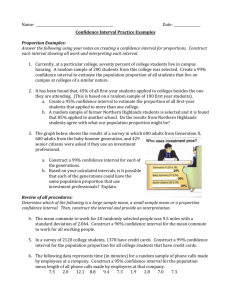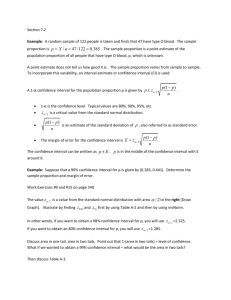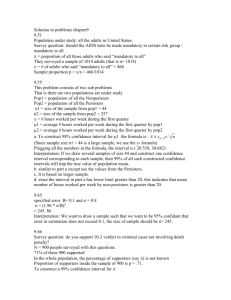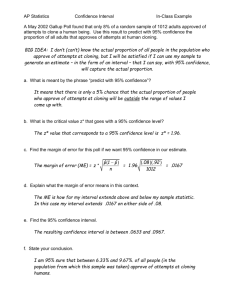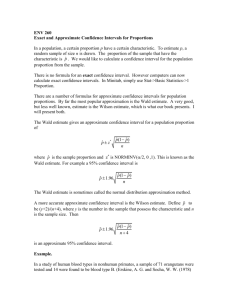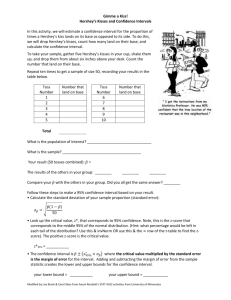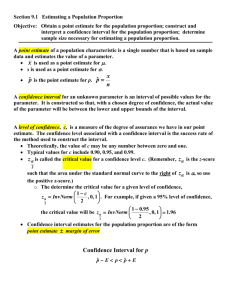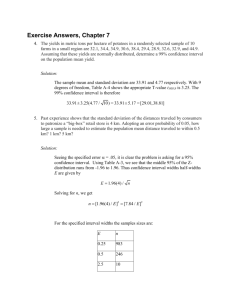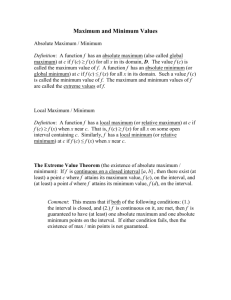Sample Size Nomogram
advertisement
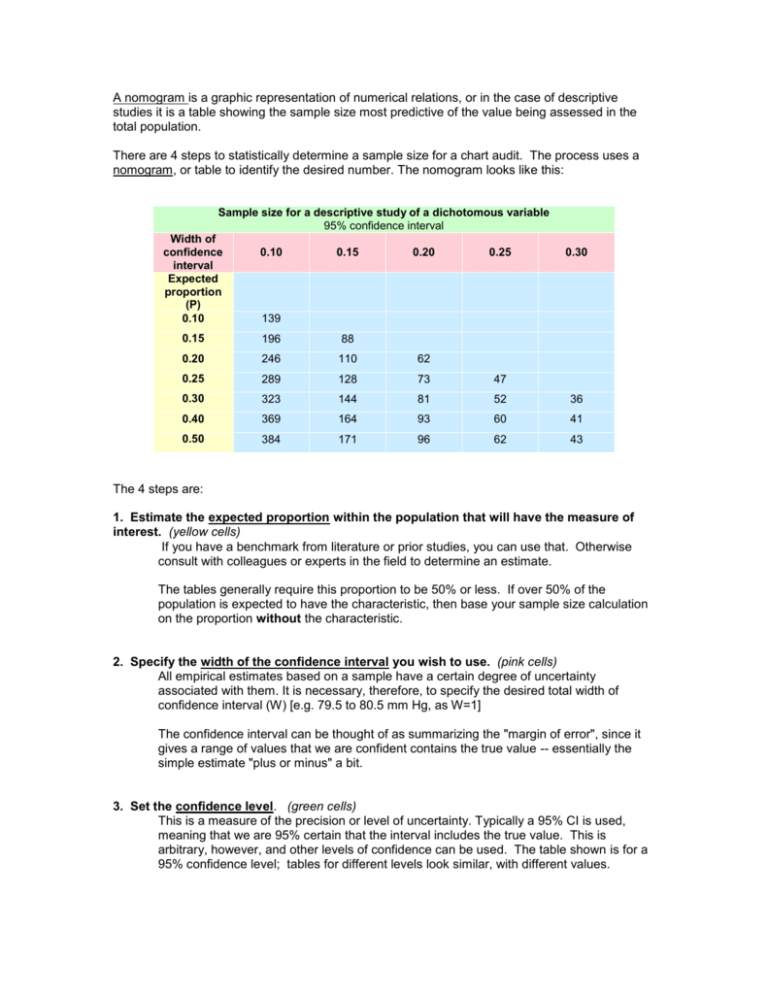
A nomogram is a graphic representation of numerical relations, or in the case of descriptive studies it is a table showing the sample size most predictive of the value being assessed in the total population. There are 4 steps to statistically determine a sample size for a chart audit. The process uses a nomogram, or table to identify the desired number. The nomogram looks like this: Sample size for a descriptive study of a dichotomous variable 95% confidence interval Width of confidence interval Expected proportion (P) 0.10 0.10 0.15 0.20 0.25 0.30 139 0.15 196 88 0.20 246 110 62 0.25 289 128 73 47 0.30 323 144 81 52 36 0.40 369 164 93 60 41 0.50 384 171 96 62 43 The 4 steps are: 1. Estimate the expected proportion within the population that will have the measure of interest. (yellow cells) If you have a benchmark from literature or prior studies, you can use that. Otherwise consult with colleagues or experts in the field to determine an estimate. The tables generally require this proportion to be 50% or less. If over 50% of the population is expected to have the characteristic, then base your sample size calculation on the proportion without the characteristic. 2. Specify the width of the confidence interval you wish to use. (pink cells) All empirical estimates based on a sample have a certain degree of uncertainty associated with them. It is necessary, therefore, to specify the desired total width of confidence interval (W) [e.g. 79.5 to 80.5 mm Hg, as W=1] The confidence interval can be thought of as summarizing the "margin of error", since it gives a range of values that we are confident contains the true value -- essentially the simple estimate "plus or minus" a bit. 3. Set the confidence level. (green cells) This is a measure of the precision or level of uncertainty. Typically a 95% CI is used, meaning that we are 95% certain that the interval includes the true value. This is arbitrary, however, and other levels of confidence can be used. The table shown is for a 95% confidence level; tables for different levels look similar, with different values. A narrow confidence interval (say 79.5 to 80.5 mm Hg) with a high confidence level (99%) is more likely to include the true population value than a wider interval and lower confidence level. However a larger sample size will be required to achieve this. 4. Use the table to estimate sample size. (blue cells) If the number required is too large to be completed, one can recalculate with a lower confidence level and/or wider interval to choose a smaller number.







